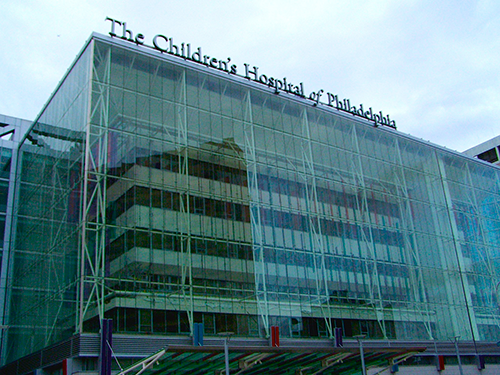Feb 29 2016 Strong partnerships are key to linking growth and opportunity
 A Business Improvement District (BID) is “a public-private partnership in which property and business owners elect to make a collective contribution to the maintenance, development, and promotion of their commercial district,” according to the NYC Neighborhood Development Division. While these responsibilities typically fall to local government, BIDs bring together private-sector stakeholders to improve these services in their neighborhoods, where the public sector may not have the resources to make a difference on its own. One key neighborhood issue that is less frequently tackled by BIDs is poverty, but in a recent piece in Next City, Matt Bergheiser, Executive Director of the University City District (UCD) in Philadelphia, makes a compelling case for how BIDs can be influential in tackling unemployment and poverty through strong partnerships with local institutions.
A Business Improvement District (BID) is “a public-private partnership in which property and business owners elect to make a collective contribution to the maintenance, development, and promotion of their commercial district,” according to the NYC Neighborhood Development Division. While these responsibilities typically fall to local government, BIDs bring together private-sector stakeholders to improve these services in their neighborhoods, where the public sector may not have the resources to make a difference on its own. One key neighborhood issue that is less frequently tackled by BIDs is poverty, but in a recent piece in Next City, Matt Bergheiser, Executive Director of the University City District (UCD) in Philadelphia, makes a compelling case for how BIDs can be influential in tackling unemployment and poverty through strong partnerships with local institutions.
“Could a platform established decades ago to shape the physical well-being of urban centers offer an answer to the challenge of economic disconnection in city neighborhoods?” Bergheiser asks. For the UCD, the answer has been yes. The District recognized the disparity between growth and opportunity in University City and its surrounding neighborhoods, where 81,000 people live in poverty, and unemployment remains at 15 percent. To address this problem, UCD created the West Philadelphia Skills Initiative, a workforce development and job training effort, and embedded this work within the BID.
“If BIDs want to create livable and vital cities and neighborhoods, then an all-in strategy to leverage relationships for inclusive opportunity seems essential.”
Bergheiser rightly notes that “a traditional job training program attempting to mitigate this disparity between growth and opportunity might struggle to gain traction with major regional employers.” But BIDs, which he likens to “mini-chambers of commerce,” are by nature gathering places for private sector leaders to come together and address public issues, making them ideal launching pads for strong workforce development partnerships. UCD, for example, forged strong partnerships with anchor institutions in the neighborhood, including the University of Pennsylvania and the Children’s Hospital of Philadelphia. UCD collaborates with these institutions to identify employer needs, recruit prospective hires, create curricula that will build necessary skills, and link job candidates to hiring managers.
The Next City article makes an important distinction between the work of the West Philadelphia Skills Initiative and what Bergheiser refers to as “charity.” The Initiative not only helps individuals in the neighborhood to gain employment with better pay and opportunities for growth; t also provides benefits to its institutional partners by decreasing entry-level turnover and improving quality of care and customer experience. The goal of UCD is not to simply help those in their community — It recognizes that “if BIDs want to create livable and vital cities and neighborhoods, then an all-in strategy to leverage relationships for inclusive opportunity seems essential.” Put simply, the economic development of a neighborhood does not need to be viewed as the enemy to neighborhood equity.
The work of UCD exemplifies the importance of forging strong ties with businesses for anti-poverty initiatives, as in order for these programs to be most effective, stakeholders need to understand the exact hiring needs of businesses and develop curricula for proper training that can be offered to unemployed or impoverished individuals in the community. This is true for workforce development programs across the country. Rochester, New Hampshire, for example, was trying to improve economic development opportunities for its citizens following the relocation of several industrial companies. Meanwhile, Safran USA and Albany Engineered Composites partnered to create a new type of fan blade for airplane engines and needed to develop a manufacturing site and acquire a workforce of hundreds in a short period of time to meet the expected demand. City officials and Great Bay Community College worked together to get these businesses to build their manufacturing site in a state industrial park. This intersector partnership resulted in a manufacturing site for the fan blades and an advanced education and work-training curriculum in aerospace technology at Great Bay Community College, providing jobs for the Rochester citizens who needed them and a skilled workforce for Safran and Albany Engineered Composites.
With these cross-sector anti-poverty strategies, sharing discretion — assigning authority based on partners’ sector- or issue-specific knowledge — is especially important. Each stakeholder typically has a specific expertise that can lend itself well to decision making that benefits the entire collaboration. Strong partnerships with anchor institutions or local industries that encourage this kind of shared decision making ensure that the collaboration’s work is advancing shared goals, for the partners and for the community.
